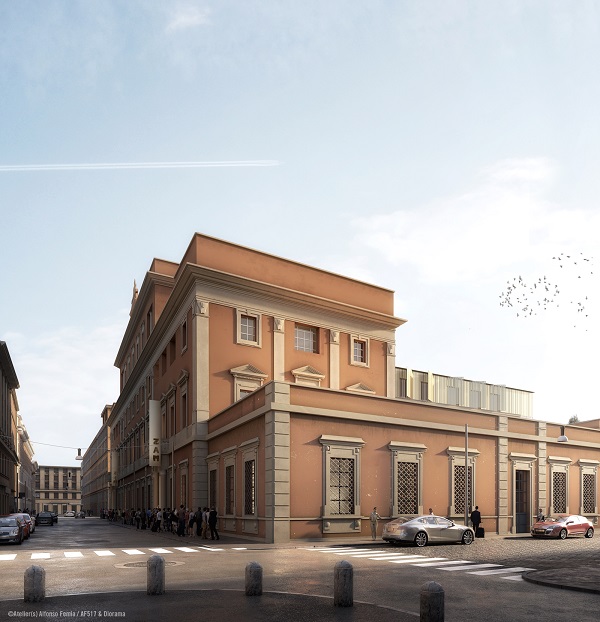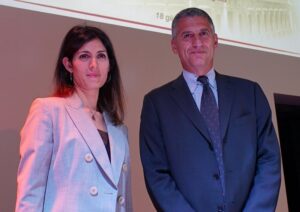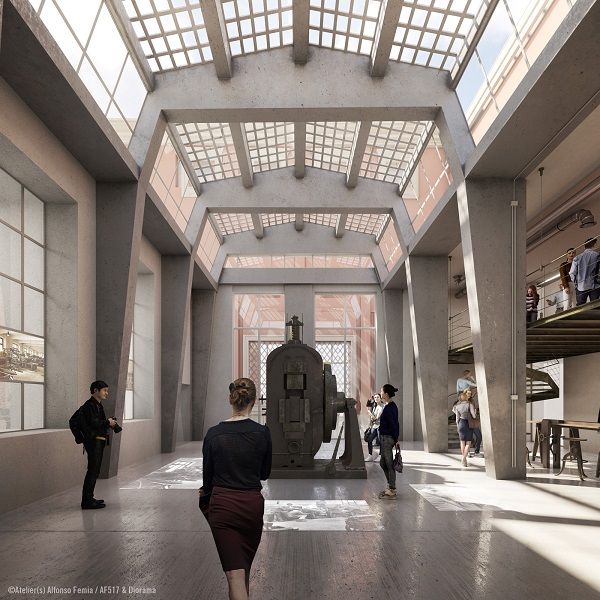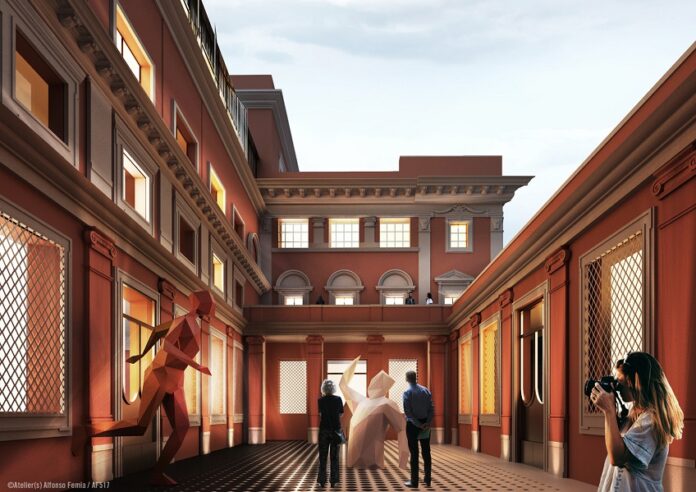The historic building, which first housed Italy’s Royal Mint (Regia Zecca) and later the Republican Mint (Regia repubblicana), will be modernised and restructured in order to use it for new purposes. The reason is the project of a group led by Atelier(S) Alfonso Femia. The project was awarded the first prize of an international competition organised in March 2018 by the Italian State Mint and Polygraphic Institute (Poligrafico e Zecca dello Stato).

New ways of using the former Italian mint
The project, which aims to open up the building for new purposes, envisages the creation of a unique cultural centre with a museological purpose: preserving the treasures of the national numismatic heritage and of industrial archaeology in the best way possible. At the same time, it will be a place to learn and to promote the handicrafts. A place where the precious tradition of the School of the Art of Medalmaking (Scuola dell’Arte della Medaglia), which has been active in the building since its inauguration in 1911, can flourish even further.
The first objective is to modernise and to restructure the building while respecting all the criteria in terms of sustainability and energy efficiency and preserving the original features of the building, which date back to the first half of the 10th century. However, the works are future-oriented since innovative materials will be used that make it possible to bring historic buildings full of treasures back to life. This will improve the urban and social environment of the historic Esquilino district.
The project presented here combines tradition and innovation. The restoration of the building in the modern style will take place in line with the functional reuse of the interior spaces. And the distinctive features that characterise the production plant and the industrial setting of the area will be preserved. Therefore, the large machines needed for the production of coins and the production plant, which will not be altered by the project, will get a suitable home.

Giving public space back to the citizens
Paolo Aielli, the CEO of the Italian State Mint and Polygraphic Institute, stated: “At the beginning of the 10th century, the combination of industrial and artistic activity led to the emergence of the first Italian mint and to this day our work is still characterised by it. The building is of great importance for the whole population and for our culture in general because it is a fundamental and unifying element of the identity of our country.”
“We kept the promise we made less than a year ago and managed to substantiate the project that will modernise and restructure the building and thus return a heritage of invaluable historical and cultural importance to the citizens, the neighbourhood associations and the entire city”, Aielli continues. “We are particularly proud of the fact that it is a public project fully financed by a public company. In our opinion, this is an added value for the entire restoration project.”
The mayor of Rome, Virginia Raggi, explained during the presentation of the project on 18 June: “Finding new ways of using the city’s buildings means returning possibilities of meeting each other to the citizens, places of cultural and social interaction. This is the intention of the restoration of the important building of the mint in the Esquilino district.”

“The first step was a competition during which different projects were presented. This is an important procedure because it enables the administration to find the best project through a public tender. The restoration works at the mint are part of a series of changes in the cityscape. In this light, the public administration promotes the comprehensive modernisation and redesign of squares and buildings. A few examples are the renovation of the Cinema Apollo, the redesign of Piazza Vittorio and the valorisation of Piazza dei Cinquecento.”
The new building complex will house a room for temporary exhibitions, a conference centre, a centre for high quality handicrafts, a centre for cultural services, a library with a historical archive, the new workshops for the young talents of the School of the Art of Medalmaking, a book shop with a cafeteria and a guest house.
The building of the mint located in the Esquilino district of Rome is of particular historical importance and has a great development potential.
The ceremony of laying the foundation stone took place more than 100 years ago
The construction of the Italian Mint (Zecca d’Italia) was decreed by the law No. 417 of 2 June 1904. On 27 June 1908, the ceremony of laying the foundation stone of the building located in Via Principe Umberto and planned by the engineer Carlo Mongini took place in the presence of King Victor Emmanuel III and the Minister of the Treasury, Paolo Carcano.
Back then, minister Carcano began his speech with the following words: “Today is a fortunate day: A long-awaited project, which was repeatedly approved by our two legislative chambers, a new mint with a school of the art of medalmaking will now be founded by you, Your Majesty – highest master of numismatics – in this Rome where the academic world shines so bright.”
We can conclude from this speech that the plans for the construction of the Italian mint and the special combination of several functions were decisively shaped by the wishes of Victor Emmanuel III, the “numismatic king”.

The building was not only conceived as a production site but also as a place of culture. Since its inauguration, the workshops for the production of coins, the School of the Art of Medalmaking (which has been there without interruption to this day) and the Mint Museum (Museo della Zecca) are located in the building.
The inauguration took place on 27 December 1911 and since then the coins of the Kingdom of Italy and the Italian Republic – from the lira to the euro – have been minted here. When the euro was introduced and the demand for these coins increased consequently, Italy also started to use the building in Via Gino Capponi in Rome’s Appio district. In 2006, the entire production was moved there, and the mint is still active today.
This article was originally published in Italian in Cronaca Numismatica. We are grateful to Roberto Gaganelli for letting CoinsWeekly use his article.
Cronaca Numismatica offers a wealth of interesting articles on Italian numismatics – and much more.
The websites of the mint and its museum can be accessed here (unfortunately, both are only available in Italian).
You can keep on reading with our article on the Museum of the Italian Mint (Museo della Zecca).
If you would like to know why the mint was a matter of heart for the Italian king, you should read this article of CoinsWeekly: A king at a pinch – the stolen coin collection of Victor Emmanuel III of Italy.
Here, you can find out more about the School of the Art of Medalmaking.



